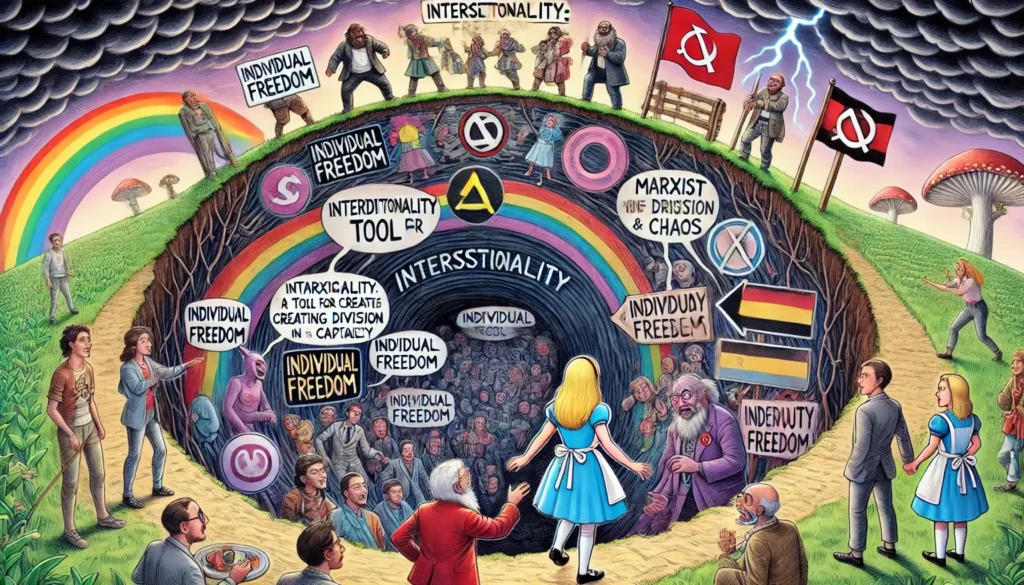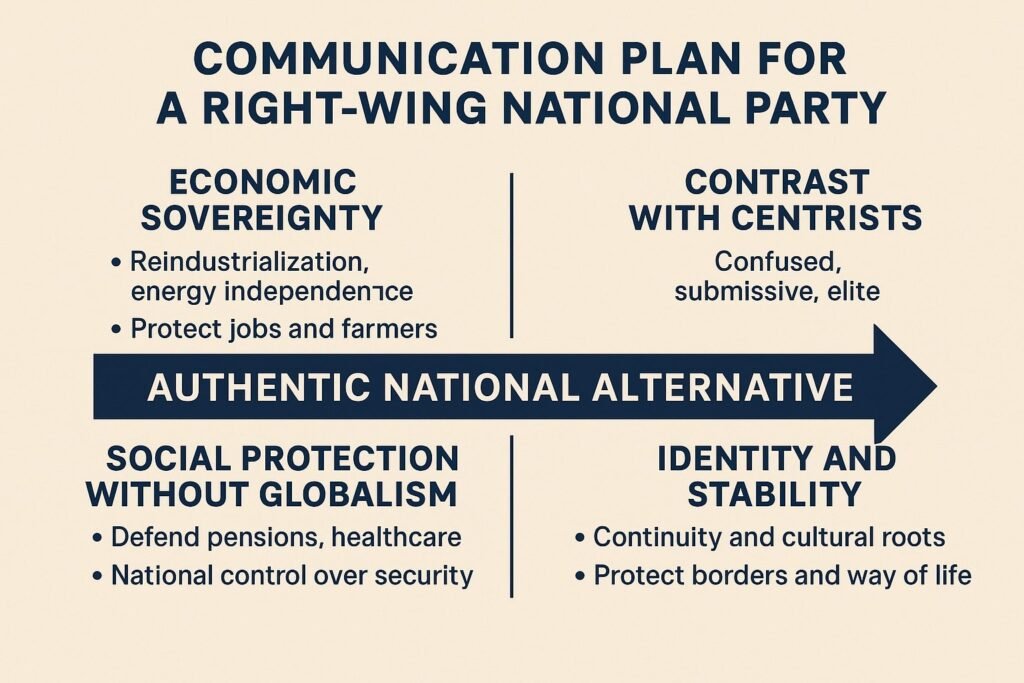Intersectionality – Slicing Society into Tribes
When One Label Isn’t Enough
In the old days, identity politics was simple: you were judged on one box — race, sex, class.
Intersectionality changed that. Suddenly, oppression became a math problem. Are you black, female, and gay? Jackpot. Are you white, male, and straight? Sorry — you’re the villain by default.
It’s not about equality anymore. It’s about slicing society into tribes and keeping score.
Table of contents
What Is Intersectionality?
Coined by Kimberlé Crenshaw in the late 1980s, intersectionality started as a legal idea: the courts were ignoring how race and gender overlapped in discrimination cases.
Reasonable enough. But activists expanded it. Now it’s a framework where every identity trait — race, gender, sexuality, ability, class — stacks to determine your oppression score.
The higher your score, the more moral authority you have.
Buzzwords of Intersectionality
Intersectionality is a jargon factory. Some favourites:
- “Multiple axes” – The more boxes you tick, the worse you have it.
- “Matrix of domination” – Sounds academic, means identity hierarchy.
- “Compounded oppression” – Struggles are stacked like pancakes.
- “Centering voices” – Translation: privilege goes quiet, oppression gets the mic.
Less conversation. More oppression bookkeeping.
How It Shows Up in Practice
- Activism – Movements compete to prove who’s most marginalised.
- Universities – Students learn their oppression score before they learn algebra.
- Workplaces – Training sessions carve staff into identity groups.
- Politics – Laws pitched not as universal rights but as carve-outs for specific groups.
In practice, intersectionality rewards grievance and punishes individuality.
Why Institutions Promote It
Because it expands the market.
- NGOs get to represent more groups.
- Universities justify endless research on identity sub-categories.
- HR departments roll out “intersectional equity” trainings.
- Corporations slap more rainbows and hashtags on their branding.
Intersectionality guarantees no finish line. The more boxes, the more work to do, the more money to make.
The Consequences
- Endless victim hierarchy. Some voices always ranked above others.
- Fragmentation. Movements split into smaller, competing factions.
- Silenced dissent. If your “score” is low, your opinion doesn’t count.
- Resentment. Ordinary people feel manipulated, not liberated.
The push to unite against oppression often fractures society further.
Why It Matters
Intersectionality isn’t just theory — it shapes activism, HR, and government policy. It tells people their worth is tied to labels, not individuality.
It doesn’t bring people together. It organises them into a caste system managed by identity accountants.
From Justice to Scorekeeping
Intersectionality promised recognition and fairness. What it delivered is scorekeeping: who’s allowed to speak, who must stay silent, and who gets to cash in on grievance.
It’s not liberation. It’s bureaucracy with a rainbow calculator.
FAQ
What is intersectionality in plain terms?
It’s the idea that different identities (race, gender, sexuality) overlap to create compounded oppression.
Where did it start?
Coined by Kimberlé Crenshaw in the 1980s as a legal concept, later expanded by activists.
Why is it controversial?
It creates a hierarchy where identity traits outweigh individuality or merit.
Who benefits from it?
NGOs, universities, HR, and corporations who profit from grievance politics.
What’s the downside?
Division, resentment, silenced debate, and policies based on identity quotas.
How does intersectionality link to social justice?
Intersectionality is the organising principle of modern social justice activism. It stacks oppression scores across race, gender, sexuality, and class.
See also: Equity Explained, Privilege Explained, Systemic Racism Explained.



